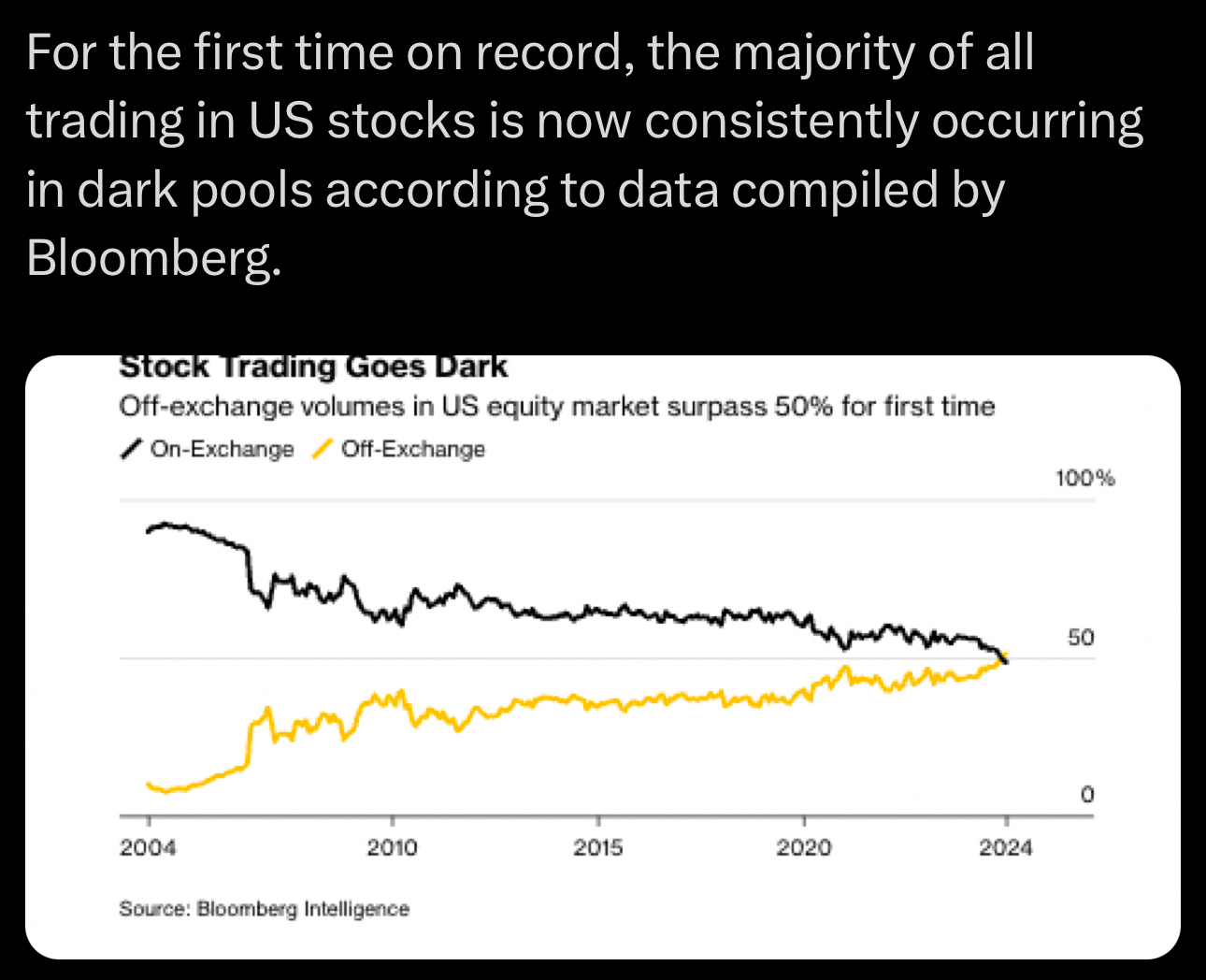
Dark Pools: The Hidden Side of Financial Markets and How Tokenized Assets Can Bring Transparency
In the world of finance, transparency is often hailed as the cornerstone of fair and efficient markets. Yet, a significant portion of trading happens away from the public eye in dark pools. These private trading venues, designed to facilitate large transactions without affecting market prices, have become increasingly dominant. For the first time in history, over 50% of U.S. stock trading now occurs off-exchange, according to Bloomberg. This trend raises critical questions about market fairness, transparency, and the future of trading.
At Future Finance Lab, we believe in exploring the intersection of finance and technology to uncover solutions that foster trust and efficiency. In this article, we will dive into the risks posed by dark pools and examine how tokenized assets and blockchain technology can address these challenges.
What Are Dark Pools?
Dark pools, also known as private trading forums, are a type of alternative trading system (ATS) where institutional investors execute large trades away from public exchanges like the NYSE or NASDAQ. These platforms offer advantages such as:
Anonymity: Preventing market moves caused by public knowledge of large trades.

Reduced Market Impact: Allowing trades to be executed without immediately affecting the stocks price.
While these features serve a purpose, they come at a cost. The lack of public scrutiny creates a fragmented and opaque market, leaving retail investors at a disadvantage and reducing overall market transparency.
The Dangers of Dark Pools
1. Market Opacity:
Dark pools obscure large portions of trading activity, which can distort price discovery the process by which market prices reflect supply and demand.
2. Unfair Advantage:
Institutional players gain access to privileged information and favorable trading conditions that retail investors lack.
3. Risk of Manipulation:
The absence of public oversight increases the likelihood of market manipulation or collusion among participants.
4. Liquidity Challenges:
When too much volume is diverted to dark pools, public markets can suffer from reduced liquidity, leading to higher volatility and wider spreads.
5. Eroding Trust:
For markets to function effectively, participants need confidence in their fairness. The secrecy of dark pools undermines this trust.
Can Tokenized Assets Fix the Problem?
Tokenized assets represent real-world assets (such as stocks, bonds, or real estate) on a blockchain. By leveraging blockchain technology, tokenization introduces unprecedented transparency and efficiency into financial markets. Here is how:
1. Real-Time Transparency:
Every transaction involving a tokenized asset is recorded on a blockchain, creating an immutable and publicly accessible ledger. This ensures all market participants have equal access to trading data, addressing the opacity of dark pools.
2. Decentralized Trading Platforms:
Blockchain-powered decentralized exchanges (DEXs) allow large trades to occur with reduced market impact while maintaining transparency. Unlike dark pools, these platforms provide a record of trade volumes and prices.
3. Fair Market Access:
Tokenized assets democratize finance by lowering entry barriers. Retail investors can access fractional ownership of assets and participate in markets traditionally dominated by institutions.
4. Programmable Rules:
Smart contracts embedded in tokenized assets can enforce fair trading practices, such as mandatory disclosures or price limits, reducing the potential for manipulation.
5. Enhanced Liquidity:
Fractionalization of tokenized assets increases market liquidity by enabling smaller trades, reducing the reliance on private venues for large transactions.
Challenges to Overcome
While tokenized assets present a compelling solution, there are hurdles to widespread adoption:
Regulatory Uncertainty:
Governments and regulators must define clear frameworks for blockchain-based trading to ensure compliance and protect investors.
Infrastructure and Scalability:
Blockchain networks need to handle high transaction volumes efficiently to compete with existing financial systems.
Institutional Buy-In:
For tokenized markets to thrive, institutional players must adopt and trust the technology.
The Future of Financial Markets
The rise of dark pools highlights the need for innovation in financial markets. Tokenized assets offer a pathway to greater transparency, efficiency, and inclusivity. By merging the power of blockchain technology with financial systems, we can create markets where everyone from retail investors to institutions has equal access to information and opportunities.
At Future Finance Lab, we are committed to exploring these cutting-edge solutions. Our goal is to empower investors with the tools and knowledge to thrive in a rapidly evolving financial landscape. Together, we can pave the way for a fairer, more transparent future.
Stay tuned as we continue to explore innovations in finance and technology. Have thoughts on dark pools or tokenized assets? Join the conversation on FutureFinanceLab.com!
